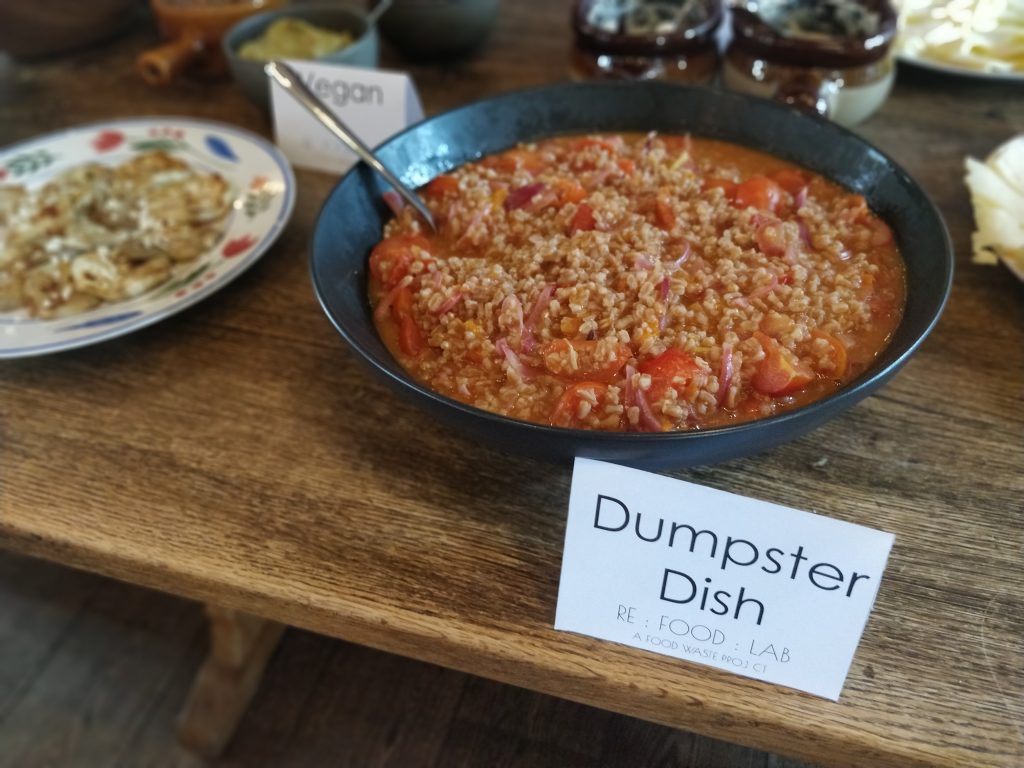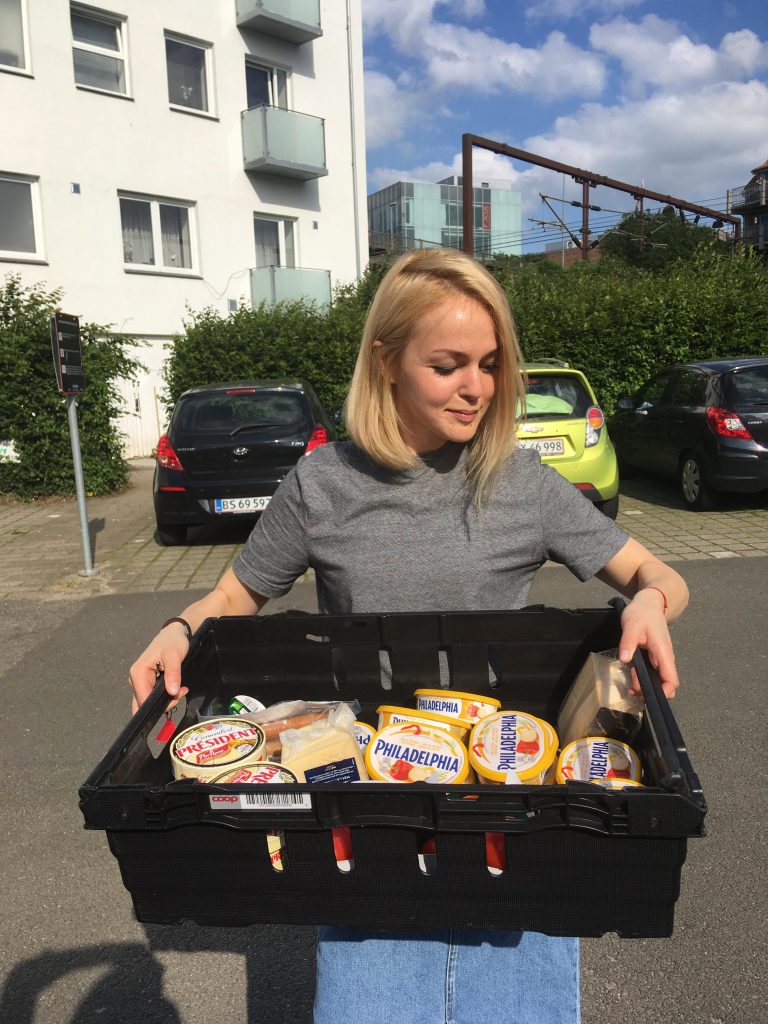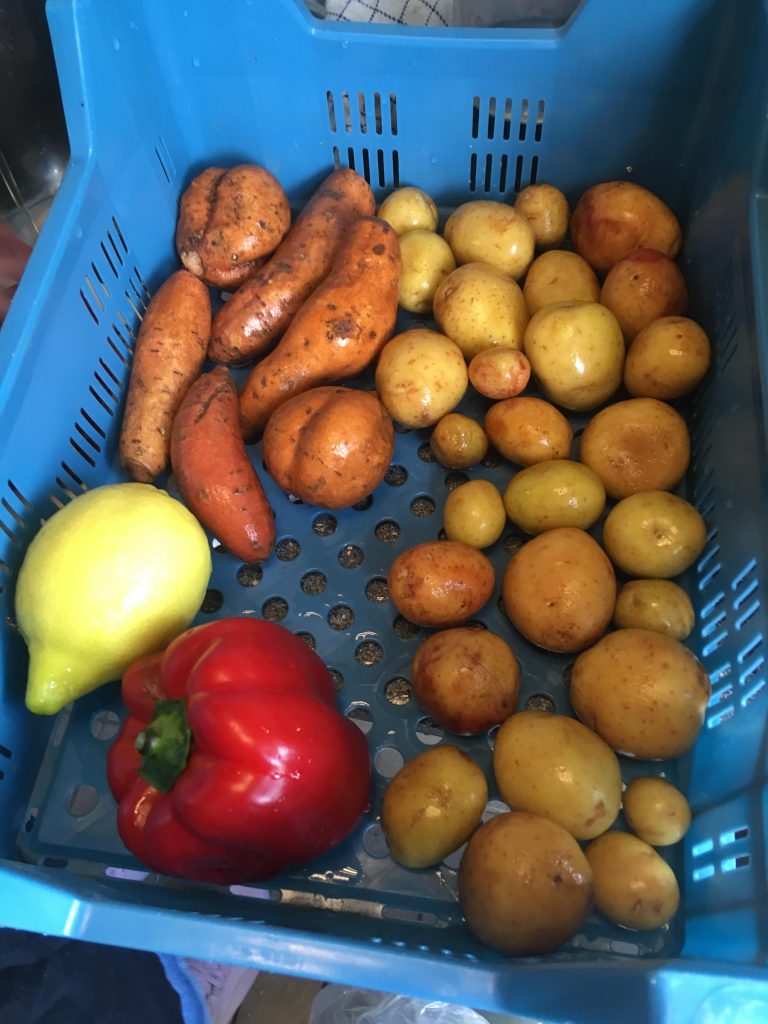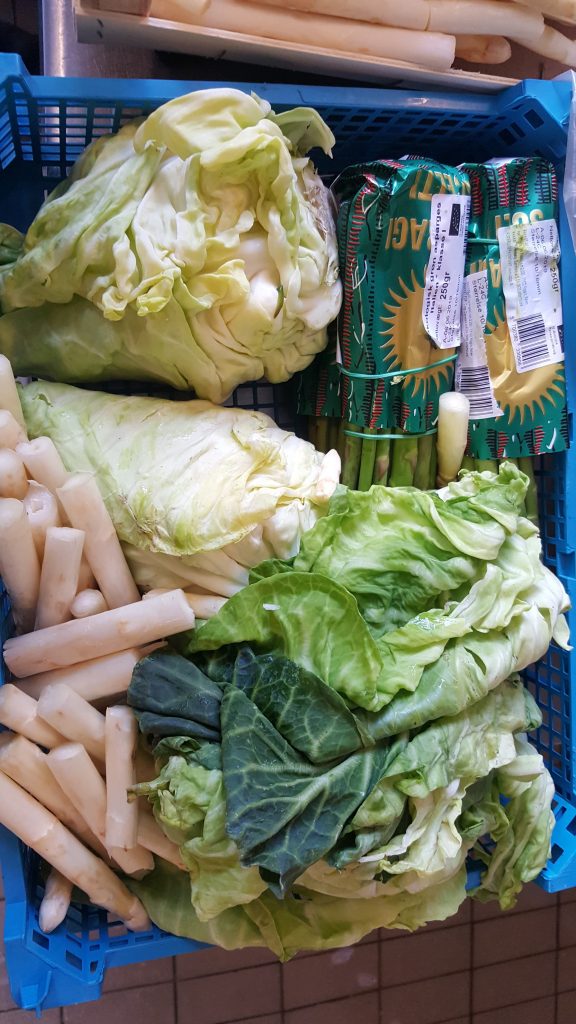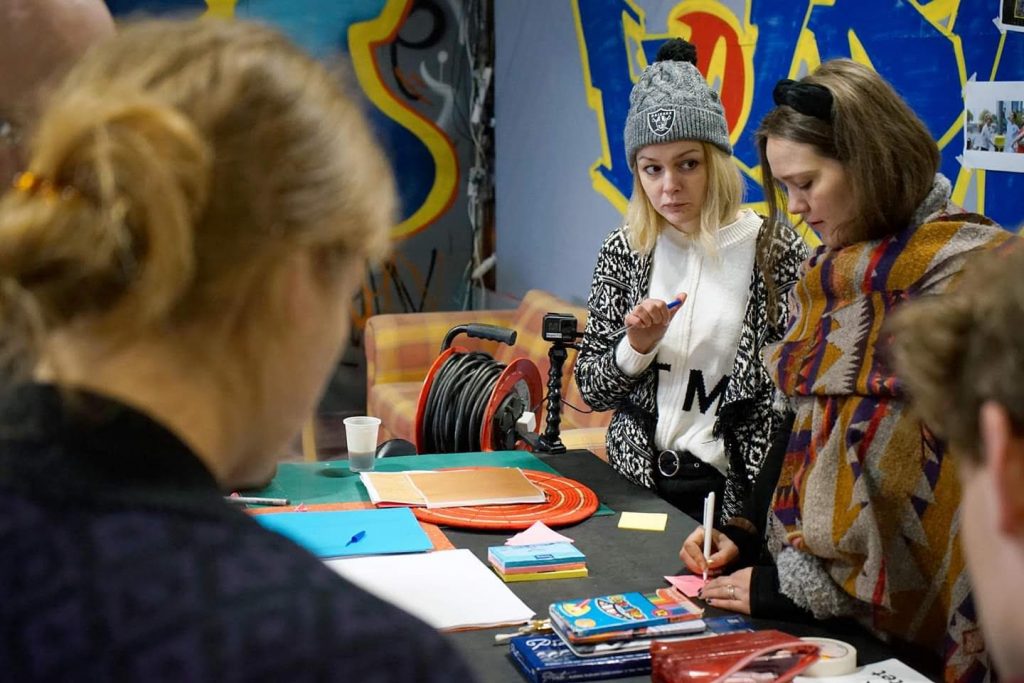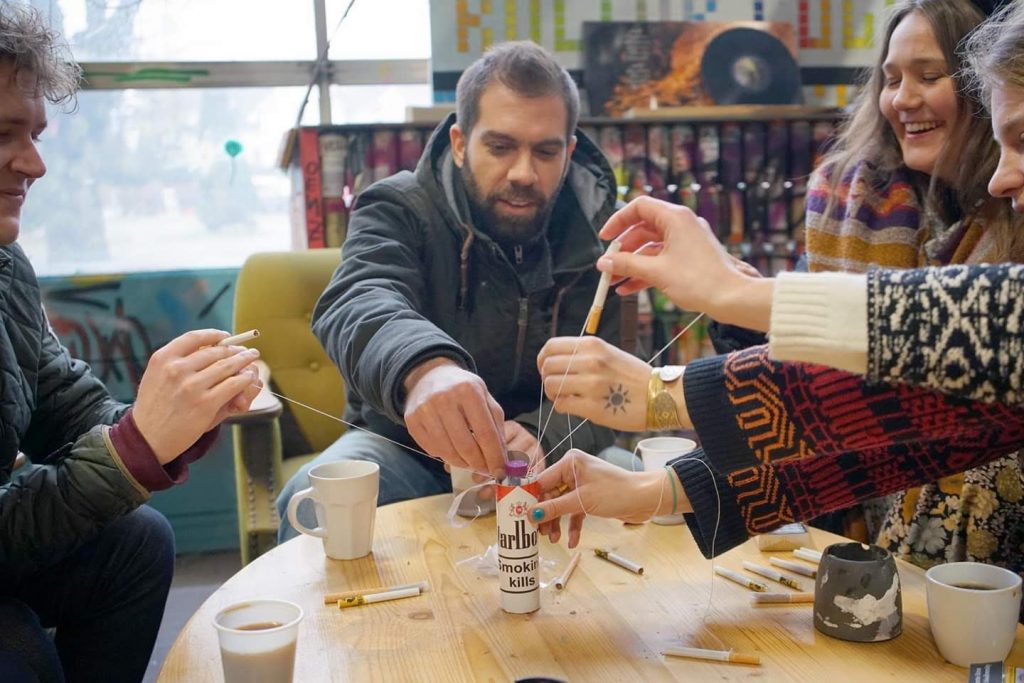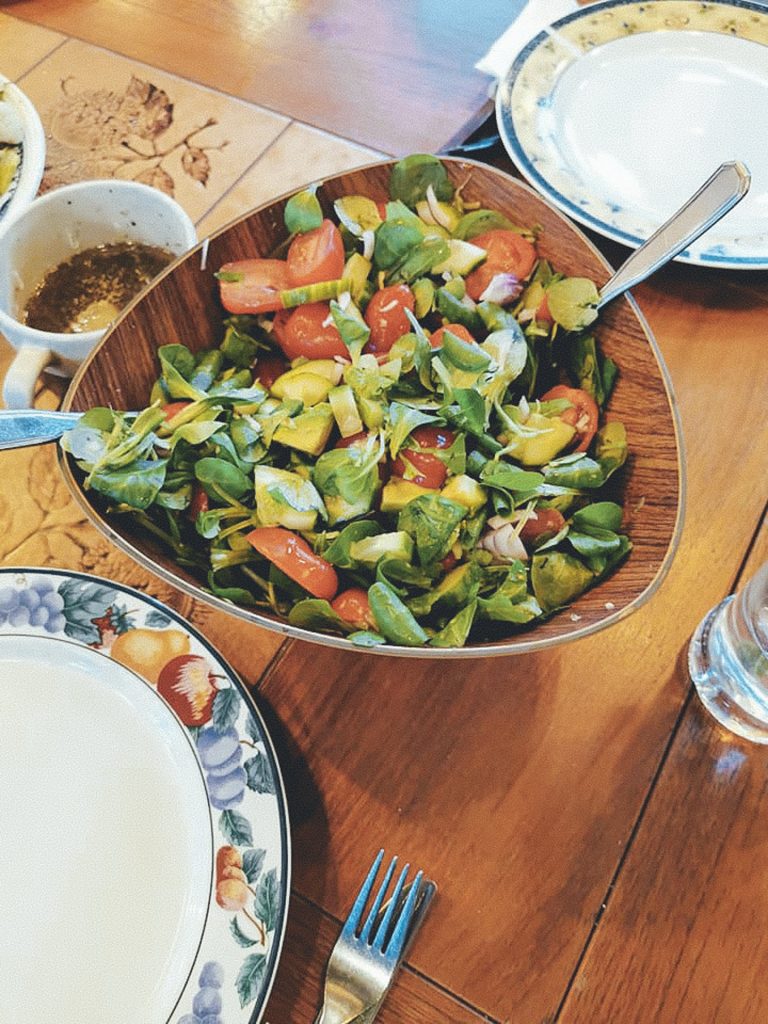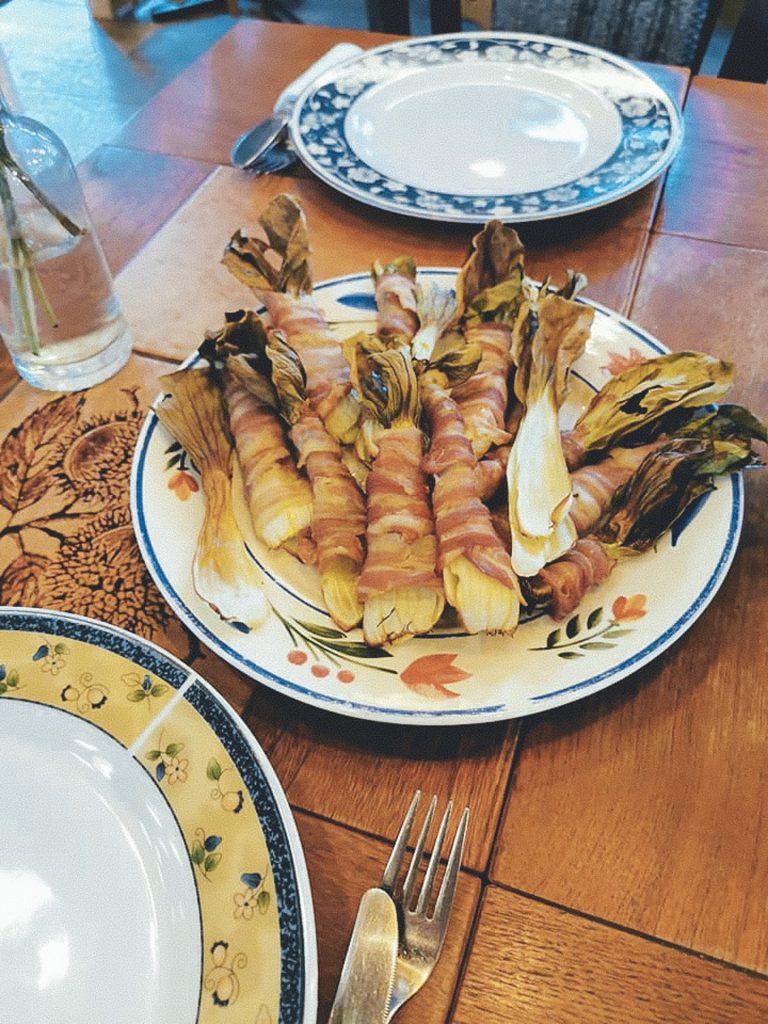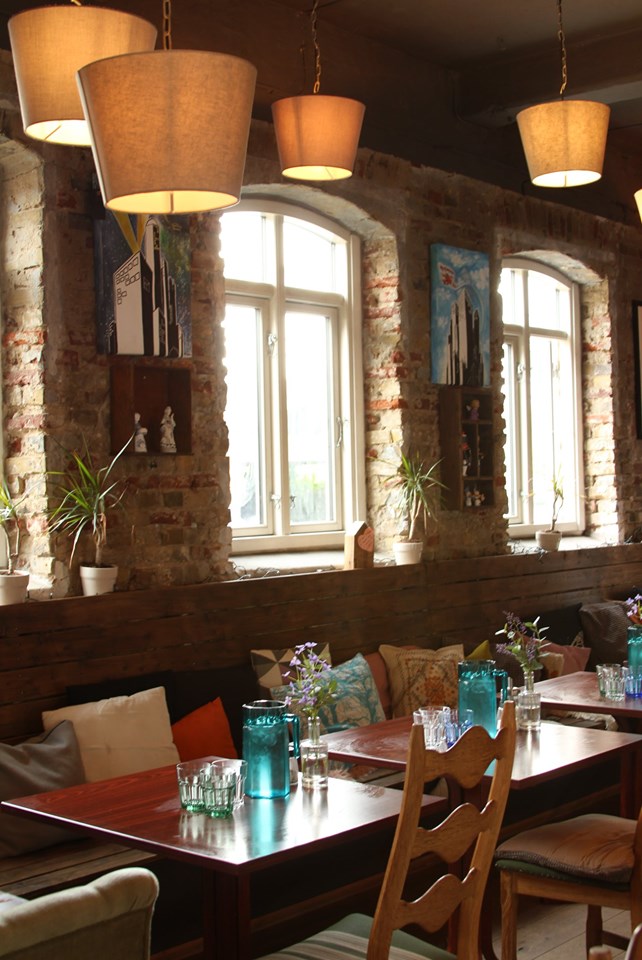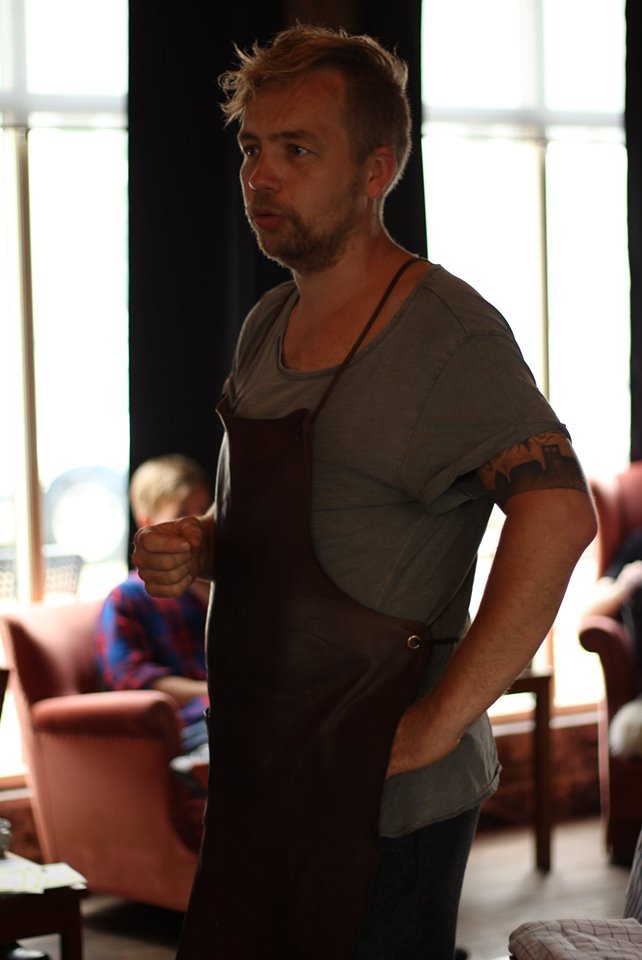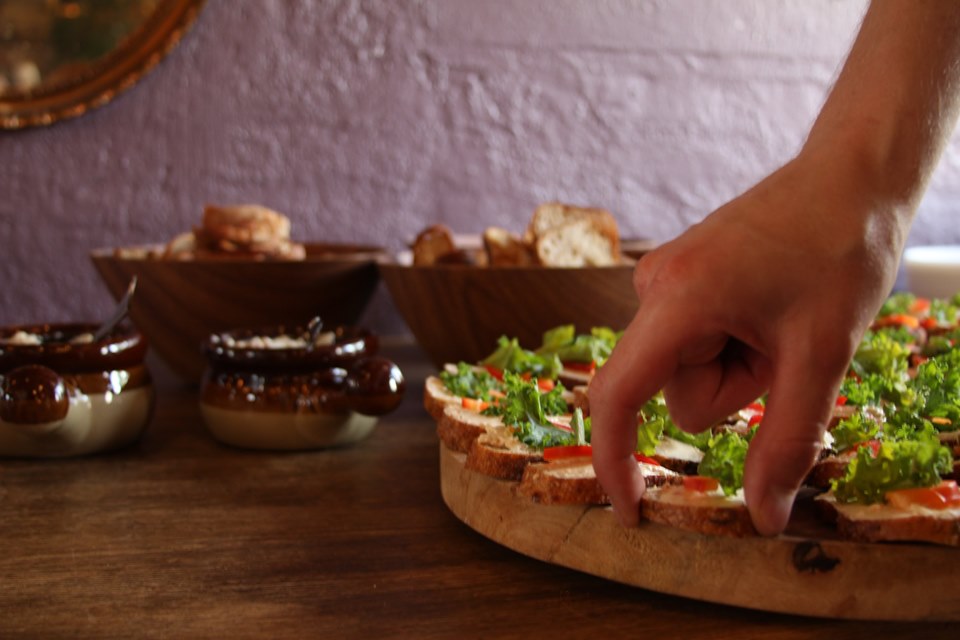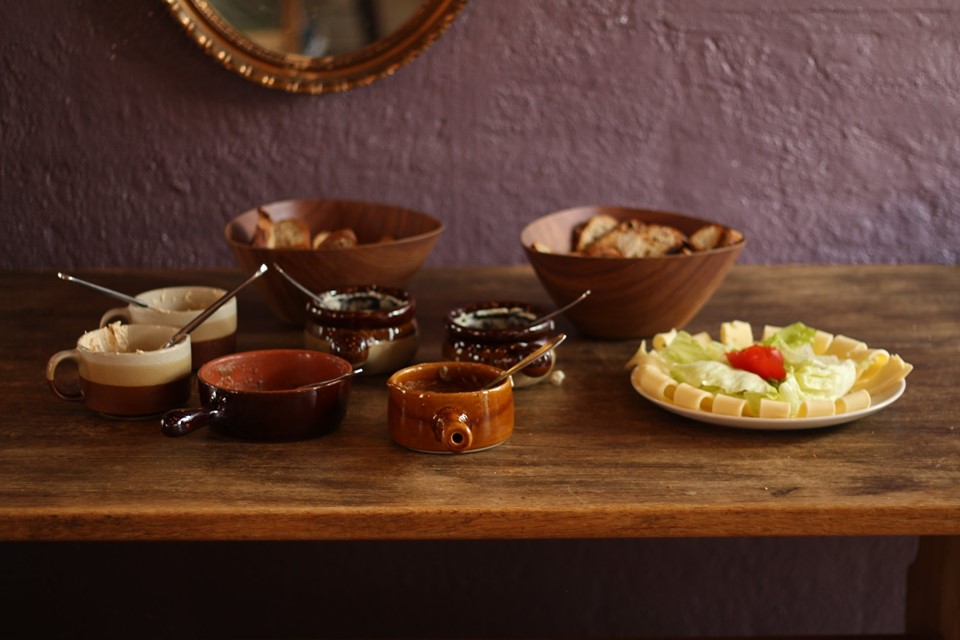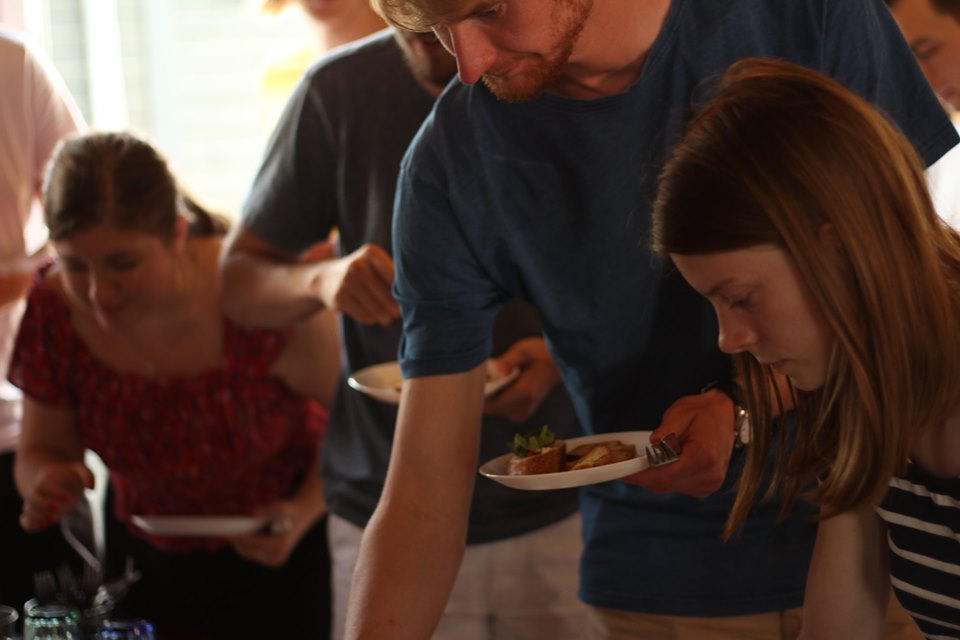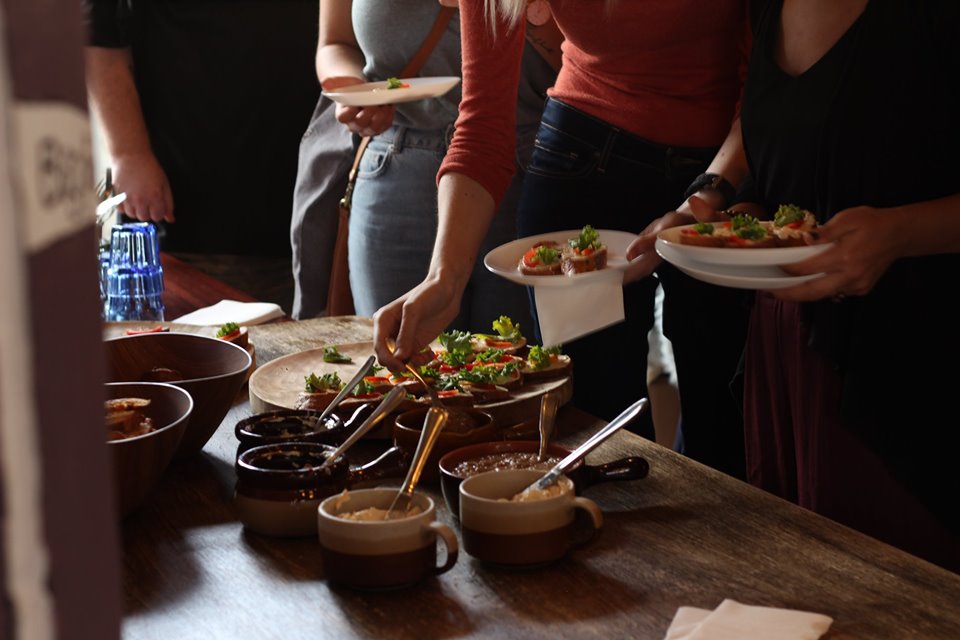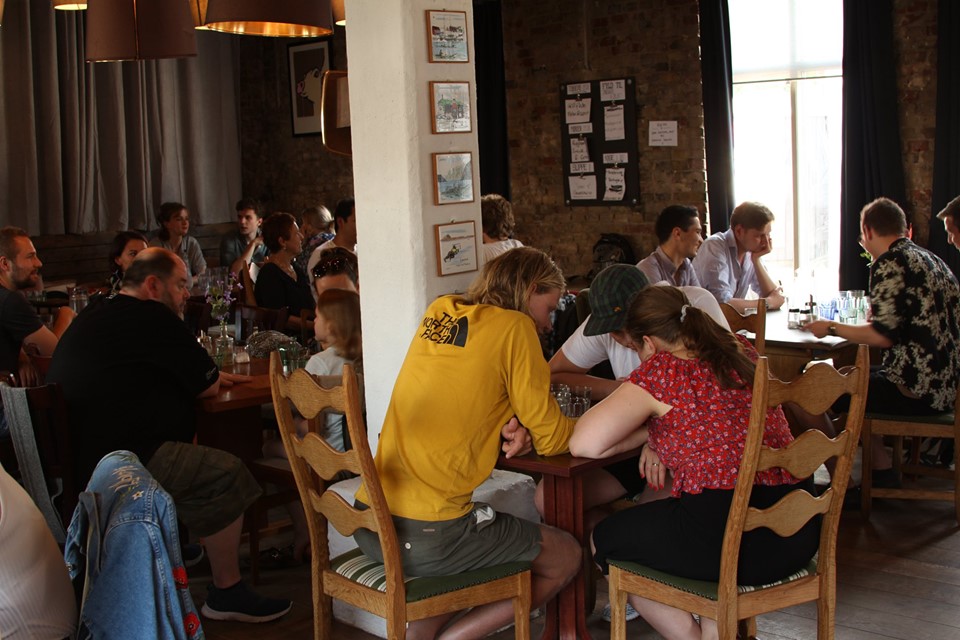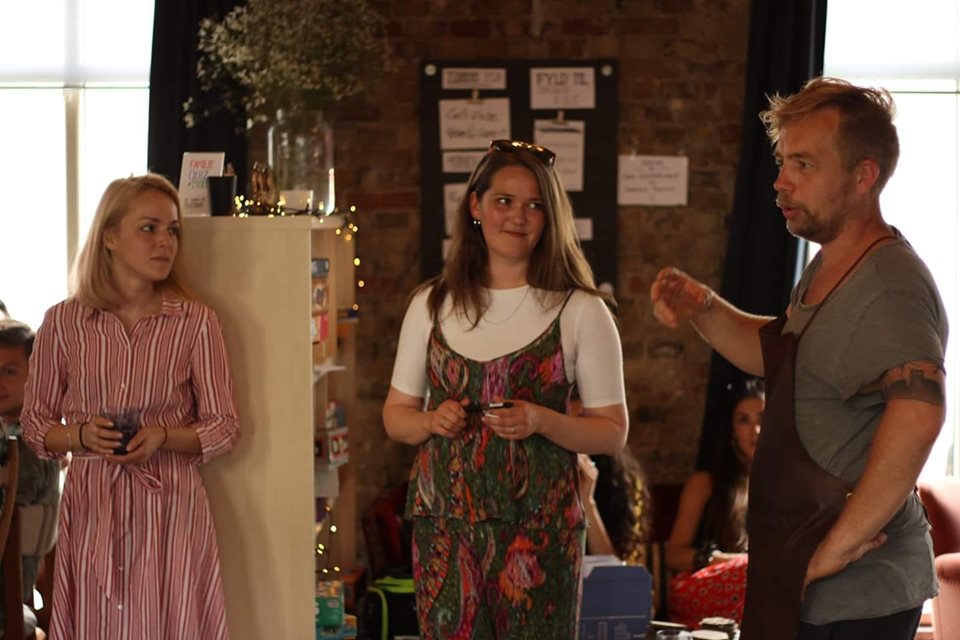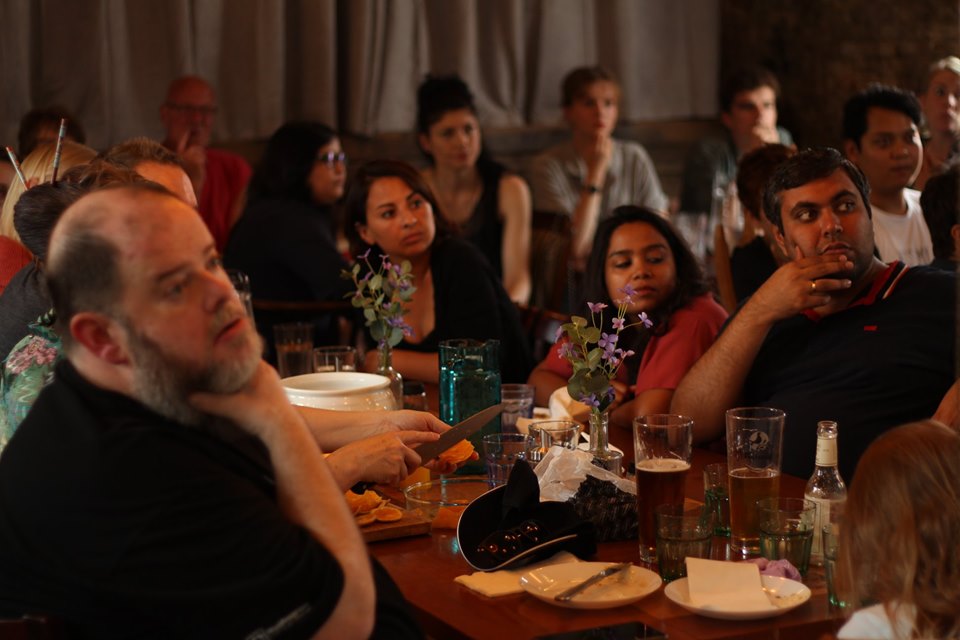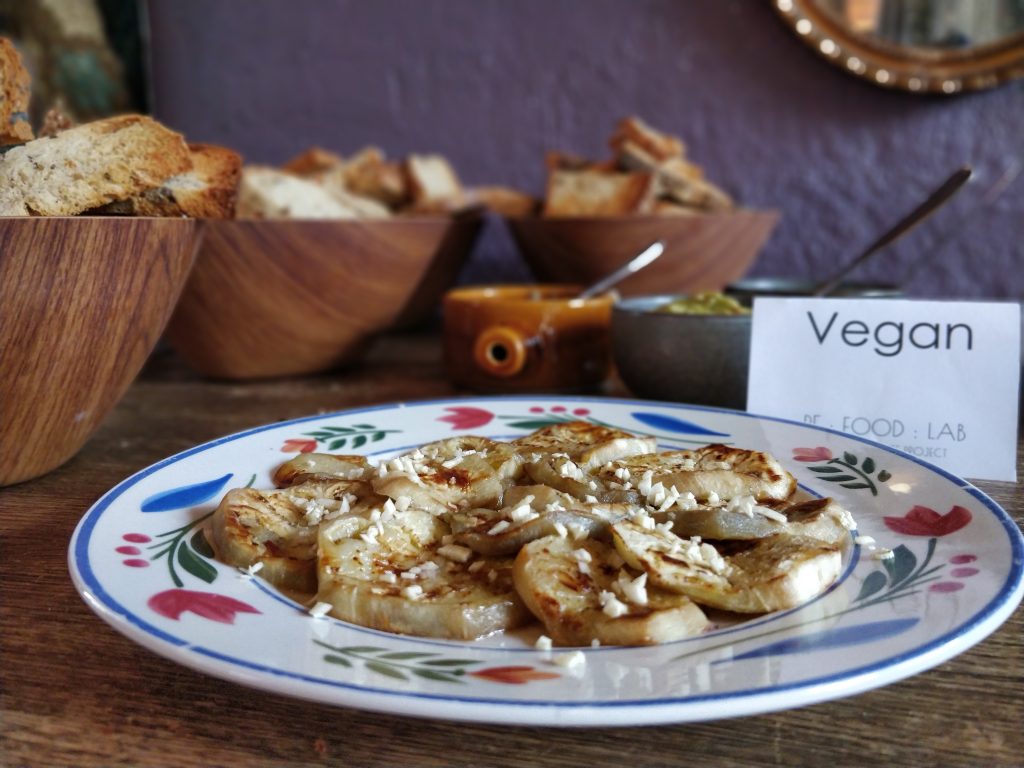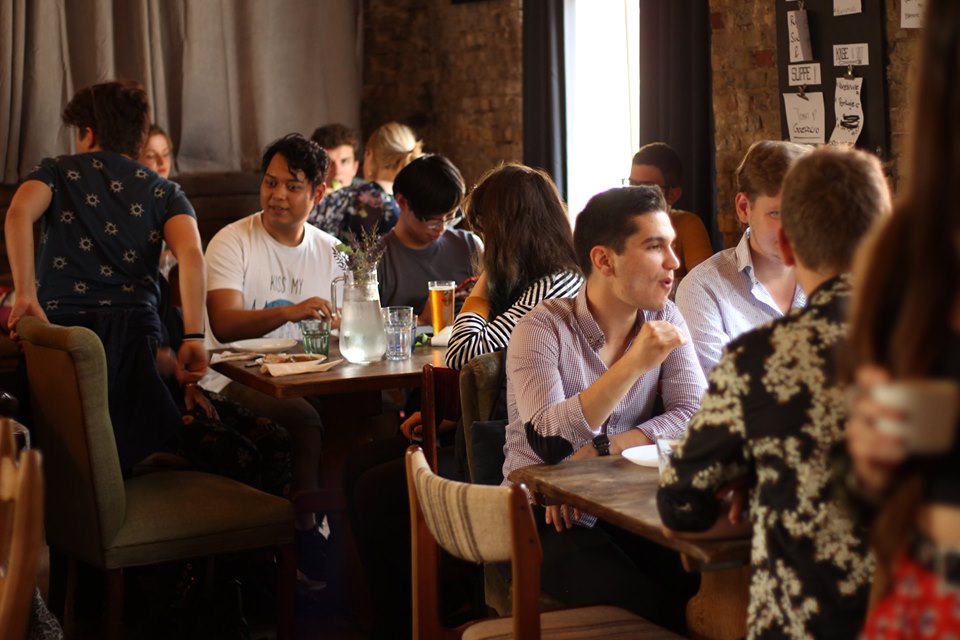Food:RE:Formers believes that local activation and enlightenment is the first step towards making an actual global impact and planting an optimistic approach to sustainable living.
“Losing food to one waste heap or another is an issue in both high- and low-income countries. In places where income is low, wastage is generally unintentional and occurs earlier in the supply chain—food rots on farms or spoils during storage or distribution. In regions of higher income, willful food waste dominates farther along the supply chain. Retailers and consumers reject food based on bumps, bruises, and coloring, or simply order, buy, and serve too much.” (Source: Drawdown)
Storage room for food waste
The night before, Iben had met a manager of a chain of grocery stores in Kolding, that kindly donated two bags of products – how did she succeed? She had gotten to know about the store’s positive attitude towards dumpster dividers and reducing food waste. Since we later discussed why she had decided to take these exact products, I will note that Iben is vegetarian and the meat was absent. In the second shop of our tour, the employee told us that they had a contract signed with a local organization that helps young people with special social status. The store only hands over the meat which is close to the expiry date and everything needs to be documented. The employees at the store told us that they didn’t give away the vegetable because the paperwork and storing was to comprehensive.
Iben’s decision about the amount of food was very accurate. She possesses the mindfulness and concern about the way we produce and utilize the resources and how we consume. She estimated the amount of food we needed for cooking and persuaded herself not to take more than what we need from storage full up the top with food waste. It turned out that stores, or at least that particular, have a room, in most cases with refrigerators, where they store the “surplus/waste” food.
It is a shelf food, slightly deformed, probably with damaged packaging or does not meet the legal requirements for type, shape, colour, etc. By law, stores are required to scrap this product, which reduces their turnover. Because of this, they are looking for ways to utilize the food before it reaches the waste containers.
Cooking and receipts with food waste
Shortly after the scheduled time, about 18:30, we were already in front of Tobbers Madbar where Paul and Katya were waiting for us – students who are currently writing their master’s thesis on speculative design against cigarettes litter. I recently took part in a workshop aiming to explore how habits, that seem to be trivial and perhaps ordinary, are influencing the ecological balance of our planet and how we can change them through a design-led approach.
Refreshed and with enough products, we entered boldly into the restaurant where we met Torben. Since he needed to finish cleaning, we took time to relax and plan the menu. We decided to work with what we have, effectuate and imagine various dishes. We started very naturally to sort out everything we had managed to collect and discuss in excitement each product. This is how the various dishes were born – from the imagination of each one of us, from our experience and desire to be bold.
We generated different ideas about soups, starters, salads, and the cherry on the cake was the dessert. If you want to find out all the recipes and the steps we followed, let me know!
We quickly formed groups of volunteers, assigned the dishes based on our preferences, and quickly found a place to work at the cosy kitchen. No one was expected to be a MasterChef! Anyone can cook! It was unexpected for Torben – so many people were grouped and worked quickly and in synchrony in the small kitchen. All the products we took from the container were well washed, altogether with their packaging.
Dishes
Spicy mushroom soup?
Green salad with tomatoes, cucumbers and avocado?
Cauliflower salad with apples and blueberries
Onion rings with bacon and cheese
Pak choi raped in bacon?
Chopped Cauliflower and onions baked in the oven
Banana and avocado cream with citrus mint leaves and blueberries on top Small baked potatoes

Tasting
After an hour of mingling in the kitchen, with a cheerful mood, setting the table and lots of pictures taken, we sat together to enjoy the dishes. We started with a brief discussion (not long because we were already very hungry) on “prejudices”. None of us has questioned whether to eat the food we cooked.
The moments of co-creating the dishes and co-experiencing the process have led the bitter thoughts to wash away. The “waste” has become a “resource,” and for many people in the world – is of a great “necessity.”
Fact
“Food is a significant source of household emissions contributing to about 17% of EU household emissions and a varying importance of 11%–32% across regions. The capital region of Denmark stands out with the highest food-related emissions with 3.9 tCO2e/cap or about 27% of the total regional footprint. These findings are in agreement with prior analysis of the Danish consumption-based emissions embodied in food”. (Edjabou and Smed, 2013)
Free Social Dinner
On June the 18th we cooked again at Tobbers Madbar, this time for the citizens of Kolding who were curious and wanted to experiment. We started at 18 o’clock and the event hosted over 60 people. The purpose of the event was not only degustation and apotheosis of culinary but a debate on our impact on climate change.
Food:RE:Formers: “A green collective that gathers all the green initiatives in Kolding, where we can share ideas and help each other towards a greener Kolding we can be proud of.”
Photo credits: Food:RE:Formers X Petra Piskor & Thomas Sievertsen
